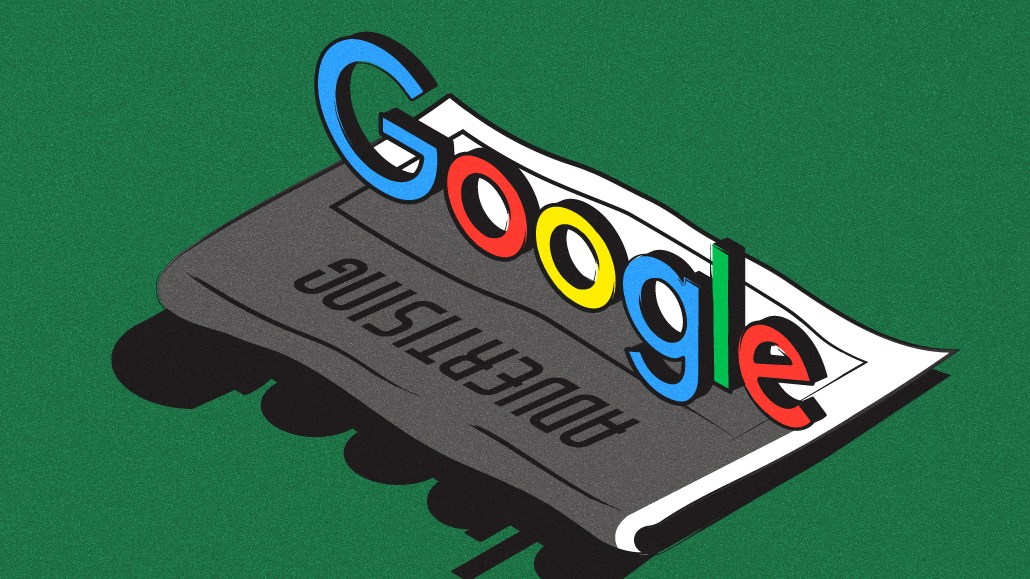By Ronan Shields and Marty Swant • September 19, 2024 •

Ivy Liu
The U.S. Department of Justice’s efforts to bring Google to heel at trial for the second time this year are well underway in a Virginia courtroom where its $307 billion-per-year ad empire faces a potential breakup.
The trial sheds light on the intricate workings of Google’s ad-tech dominance and the industry’s competitive dynamics, with some of its more esoteric offerings, such as its ad server and ad exchange, a.k.a. ‘DFP’ and ‘AdX, et al. debated extensively (see right).
In disclosures contained in more than 1,800 trial exhibits plus the testimonies of more than 25 witnesses over seven days entered by the DOJ, the complexity and implications of Google’s dominance of the digital advertising ecosystem slowly comes into view.
Below are some of the key numbers revealed in the trial so far.
Microsoft’s $2 billion DoubleClick bid
Emails by former Google insiders revealed that Microsoft was prepared to pay $2 billion for DoubleClick in early 2007. Google ultimately acquired it for $3.1 billion, considering Microsoft’s bid a significant threat to AdSense.
Google’s ‘Three Pillars’ strategy
In a 2008 email discussed in court, Neal Mohan, now CEO of YouTube, outlined how DoubleClick would integrate into Google’s display ad strategy.
- Platform to access inventory (DFP): DoubleClick for Publishers
- Ad exchange to aggregate inventory (AdX): Aggregates inventory for advertisers
- Google content network to monetize inventory (Google Display Network)
This strategy drew criticism from competitors and the DOJ, leading to calls to break up Google. Mohan had noted the importance of separating AdX from buy-side operations to avoid a “HUGE” conflict perception in market.
Google’s market influence in stats
Witness testimony and exhibits, such as internal messages between Google executives, revealed key stats about its ad tech dealings.
- 20%: Ex-Googler Eisar Lipkovitz confirmed the AdX take rate
- 37%: The amount Google keeps of every dollar flowing through its platform
- 53%: Expert testimony claimed AdX won that share of DFP auctions because of its First Look advantage
- $550 million: Google’s Exchange Bidding’s 2019 run rate from 500 publishers and 14 exchanges
- $100 million: The annual estimated cost of making AdX a neutral platform per a 2012 email
Google’s dealings with Facebook
Much of the DOJ’s case rests on how Google conducted itself in ad auctions, with the online tech giant allegedly attempting to curtail the rise of header bidding, including arrangements with other Big Tech players in the guise of its Jedi Blue arrangements.
- 15% offer: Documents reveal a networking bidding agreement – allegedly related to Jedi Blue – where Facebook considered paying Google 15% to remove its Last Look advantage
Relationship with publishers
At the core of the case is how Google’s ad tech empire impacts publishers’ online monetization efforts with former News Corp. and Gannett execs revealing curious statistics, including the former’s efforts to wean itself off AdX through its “Project Cinderella” effort.
- 40%-60%: How much NewsCorp’s programmatic revenue came from Google ads in 2017
- 37%: News UK’s drop in revenue after it de-prioritized AdX in a test run
- 60%: The peak percentage of Gannett’s programmatic revenue (currently $15 million) generated by Google
Other key numbers
The 53% win-rate enjoyed by Google is in stark contrast to those of its rivals, with ad-tech experts also appearing on the stand to offer some perspective.
- 1% win rate: Equativ CEO Arnaut Creput testified that the company won that few bids against AdX
- 0.5% win rate: IndexExchange CEO Andrew Casale stated his company cleared less than 1% of the 250 billion auctions it sees each day
- 83% of Impressions: According to Casale, that percentage of impressions came through DFP, with the next highest source being Xandr, at less than 10%.
DOJ lawyers are planning to rest their case on Sept. 20, with Google lawyers on course to formally begin their defense the following week.
Digiday’s extensive trial coverage can be found here.
https://digiday.com/?p=555861
